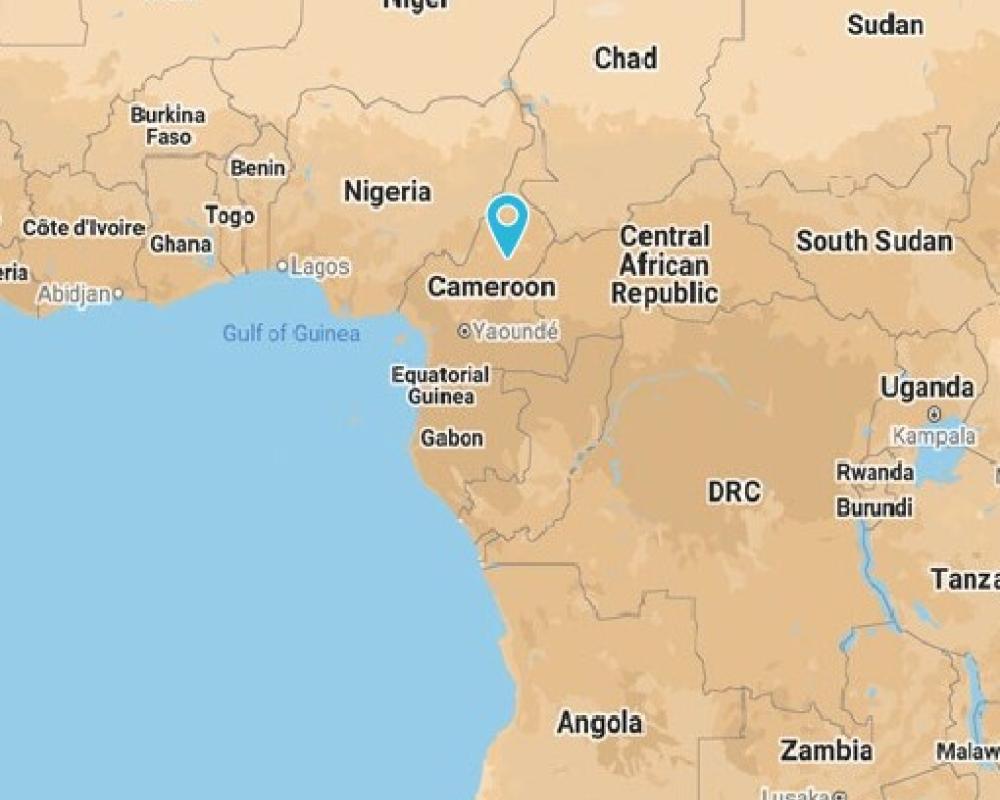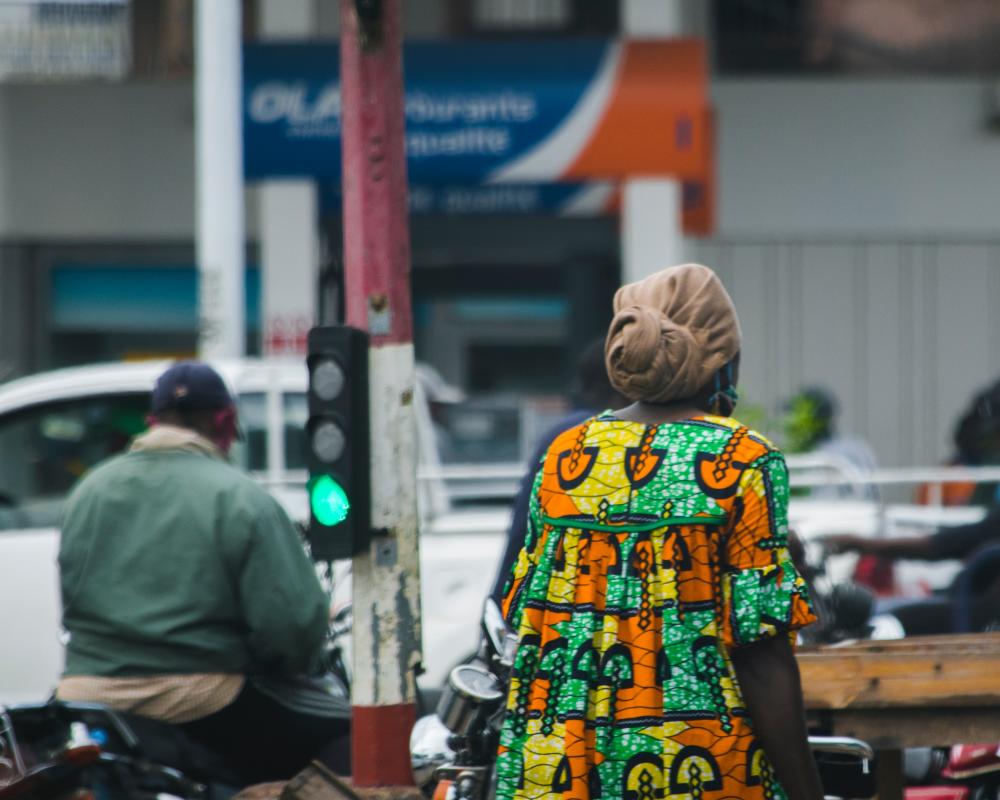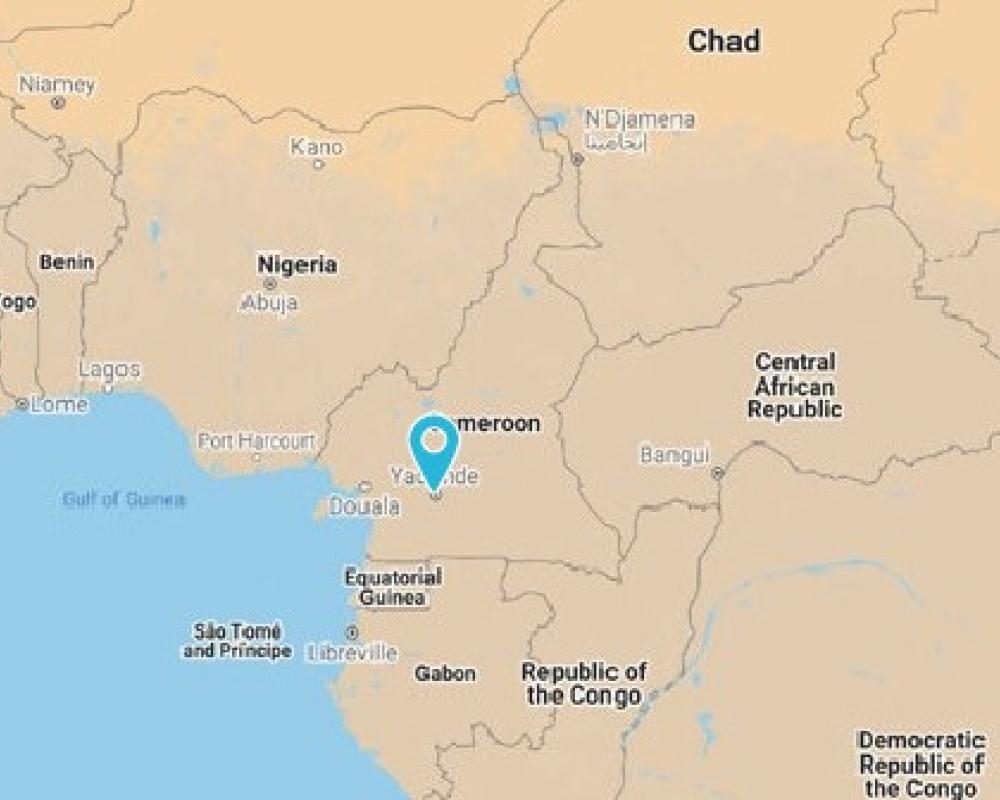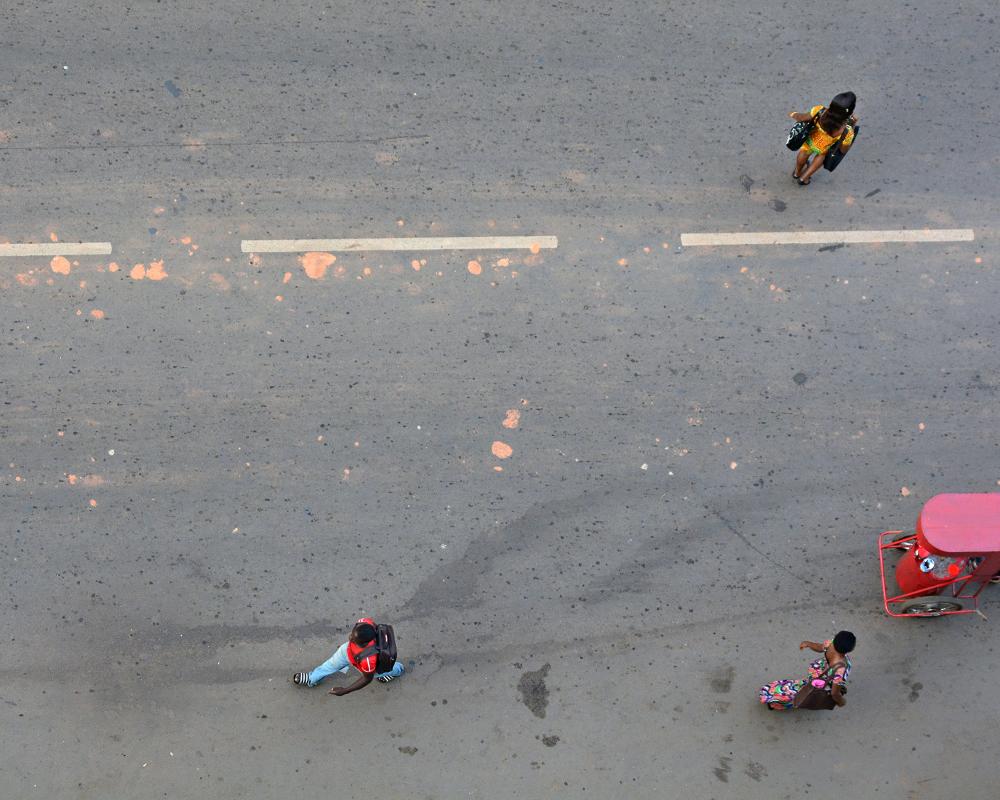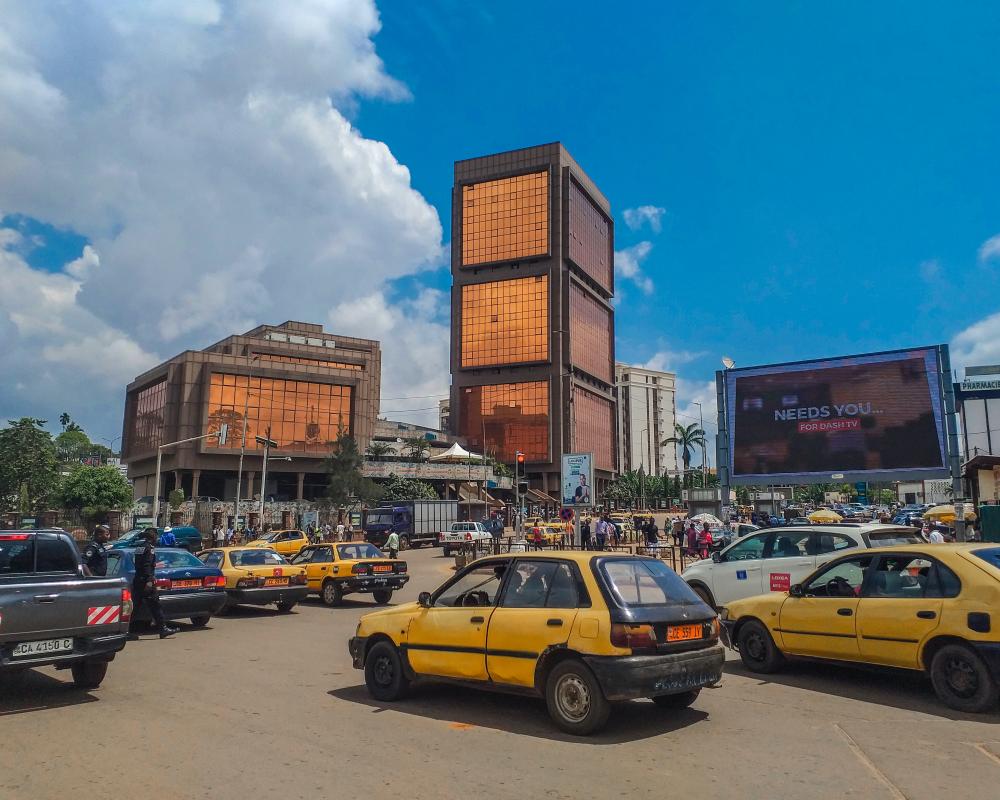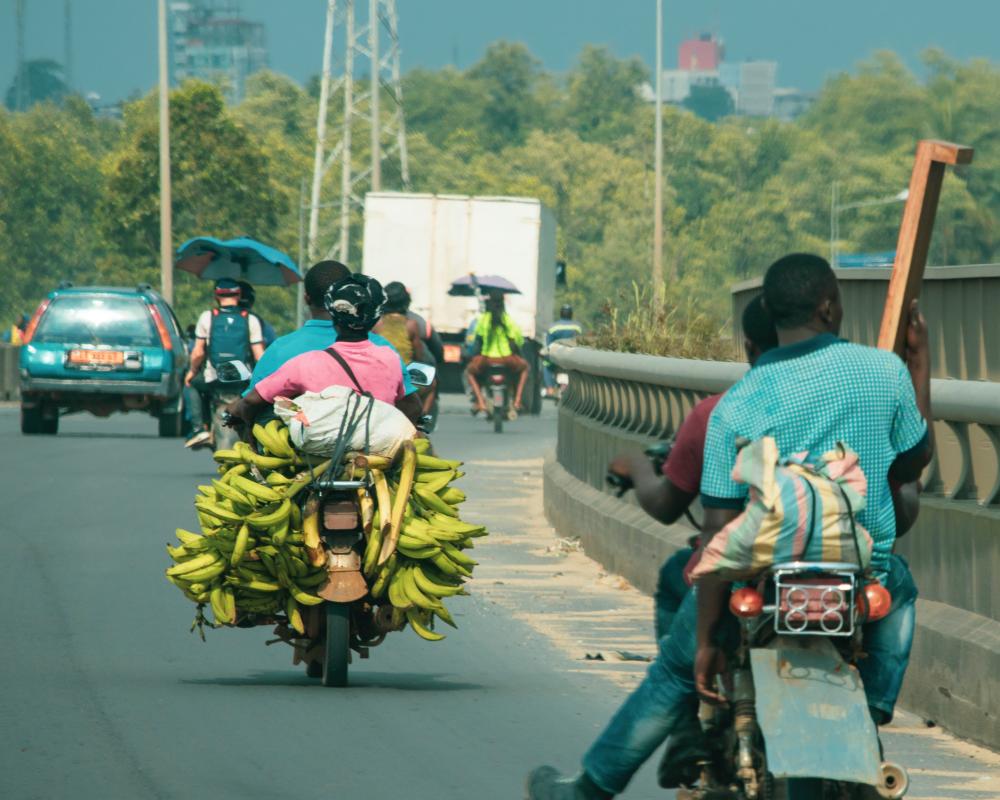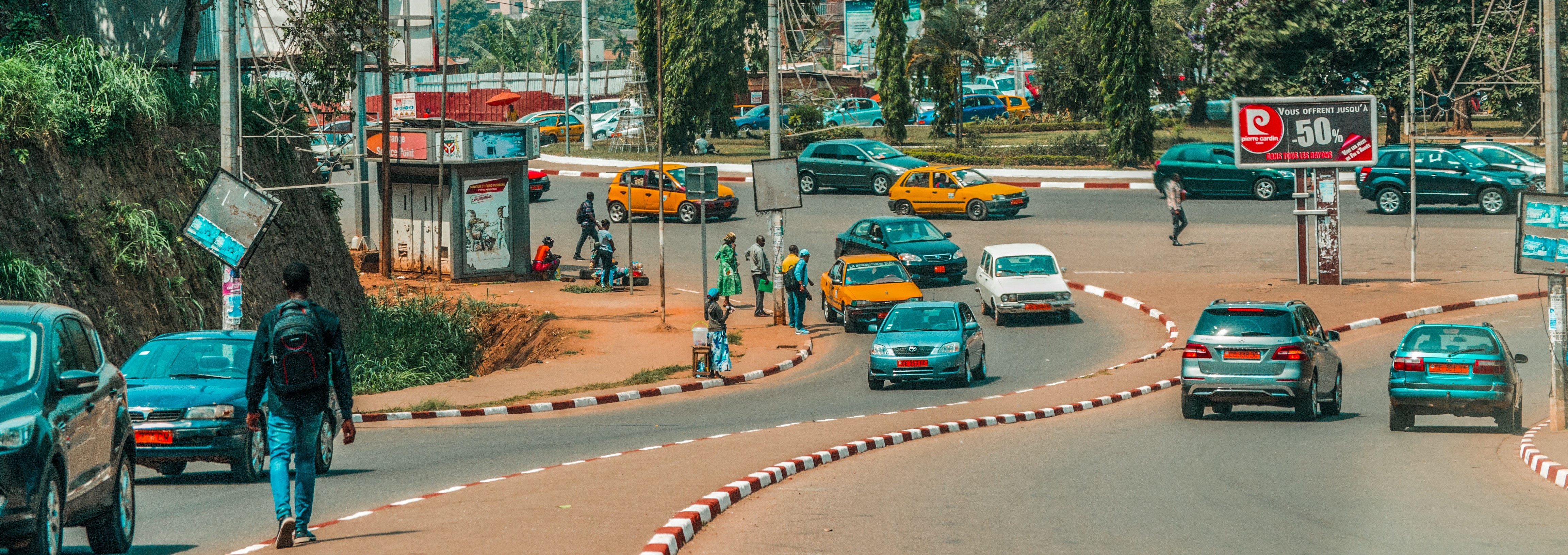MobiliseYourCity’s support in Cameroon
Cameroon has been one of the first beneficiaries of MobiliseYourCity, with one “light” NUMP and two SUMPs in the two main cities (Yaoundé and Doula), both finalised in 2019. As a consequence, a number of projects that were earmarked as priority projects in these planning documents are already reaching implementation phase.
Context and summary of activities
Growing urban mobility needs... hampered by a current inefficient mobility system
Cameroon, 25 million inhabitants, is undergoing a rapid urban population growth. With 55% of its population leaving in cities, it is the most urbanised country in Central Africa. By 2035, about 65% of Cameroonian will live in urban areas. The country is dominated by two major cities: Douala, economical capital and Yaoundé, administrative capital, which are each home of about 3 million inhabitants. Both cities are expected to reach about 6 million inhabitants by 2035. Small and medium Cameroonian cities are also growing rapidly and even at a faster pace than the two major cities.
Walking is a major transport mode in Cameroonian cities: at least one third of the trips are made by walk in Douala and Yaoundé, despite the bad conditions and lack of walkways. Informal public transport is also a dominant mode with a predominance of shared taxis in Yaoundé (40% of the trips) and moto-taxis in Douala (40% of the trips). The use of personal cars is rather limited (10% in Yaoundé, 5% in Douala) and the same applies to formal public transport which exist only in Douala.
Many challenges are currently hampering urban mobility in Cameroon, main ones being:
- urban sprawl contributing to increase mobility needs;
- neglected and unsafe walking conditions;
- poor road safety records with about 30 fatalities per year per 100.000 inhabitants countrywide (compared to about 18 globally);
- high traffic congestion despite rather sufficient road network capacity. The congestion is mainly due to unregulated abusive use of roads, inefficient traffic regulation at junctions as well as poor road infrastructures condition;
- inefficient informal public transport which contributes to traffic congestion and are often slow, expensive and unsafe;
- obsolescence of moto-taxis, taxis and minibuses which are sources of air pollution and GHG emissions and lack of an efficient and massive public transport offer;
- lack of decentralization, especially when it comes to funding.
Relevant Documents:
Cameroon NUMP
Activities in Yaundé
Follow up activities
Since the adoption of the SUMP, the Communauté Urbaine de Yaoundé and the Ministère de l’Habitat et du Développement Urbain (MINHDU) engaged actively in the implementing phase of the SUMP through inter alia:
- “Yaoundé Coeur de Ville” project aiming at improving mobility at three major mobility hubs earmarked as key strategic areas in the SUMP (Mvan, Elig Effa, Elig Edzoa). The project is currently under implementation, with an AFD financing of 66,5 million EUR.
- the preparation phase of the North-South BRT line, with AFD and EU support. A feasibility study was completed in 2023 and follow-up preparation studies are being developed, aiming at project implementation start in 2025;
- the preparation of MoVe Yaoundé project, developed by GiZ and funded by the EU, emphasizing on the redesign of Yaoundé city centre roads, promoting inter alia safe and comfortable walking conditions and the professionalization of the informal transport sector;
- the rehabilitation of primary and secondary roads and non-motorised transport links in Yaoundé, currently under construction with World Bank funding (PDVIR project, about 40 million EUR);
- Yaoundé outer ring road project, with detailed design studies completed, under EU funding.
Activities in Douala
Follow up activities
Since the Douala SUMP adoption, the Communauté Urbaine de Douala engaged actively in the implementing phase of the SUMP with mainly the launch of “Douala Urban Mobility Project”, financed by the World Bank, for a total amount of about 500 million USD and entailing the following components:
- Construction of BRT infrastructure facilities, delivery of systems and rolling stock;
- Transit-oriented development around the BRT system;
- support to institutional strengthening and professionalization of existing public transport operators;
- Project management and capacity building;
Other Relevant documents and links
Mobilise Days report - MYC Cameroon
Lessons learned from first SUMP studies Cameroon CODATU
Document SSATP
Mobility of women in African cities: How to explain inequalities of access
